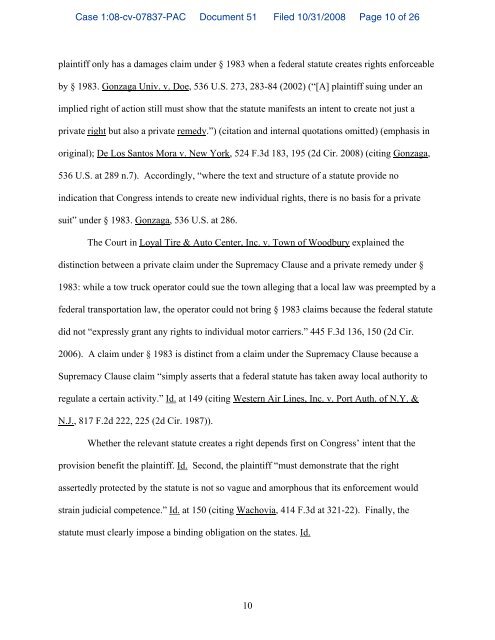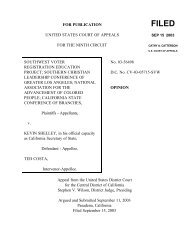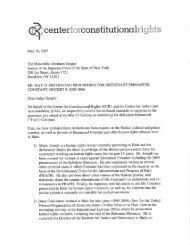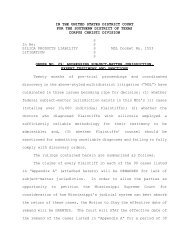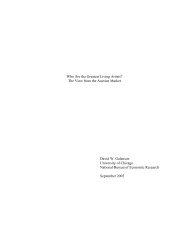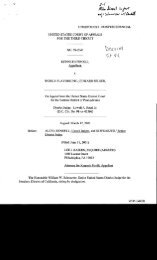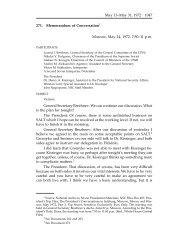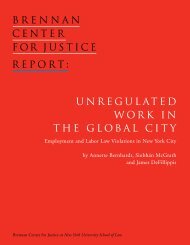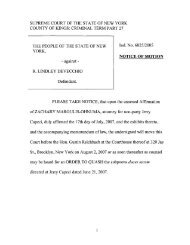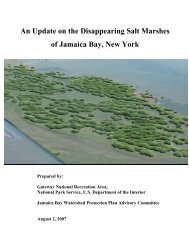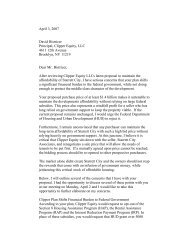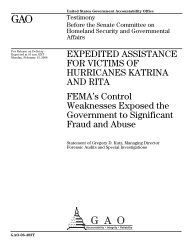UNITED STATES DISTRICT COURT SOUTHERN DISTRICT OF ...
UNITED STATES DISTRICT COURT SOUTHERN DISTRICT OF ...
UNITED STATES DISTRICT COURT SOUTHERN DISTRICT OF ...
You also want an ePaper? Increase the reach of your titles
YUMPU automatically turns print PDFs into web optimized ePapers that Google loves.
Case 1:08-cv-07837-PAC Document 51 Filed 10/31/2008 Page 10 of 26<br />
plaintiff only has a damages claim under § 1983 when a federal statute creates rights enforceable<br />
by § 1983. Gonzaga Univ. v. Doe, 536 U.S. 273, 283-84 (2002) (“[A] plaintiff suing under an<br />
implied right of action still must show that the statute manifests an intent to create not just a<br />
private right but also a private remedy.”) (citation and internal quotations omitted) (emphasis in<br />
original); De Los Santos Mora v. New York, 524 F.3d 183, 195 (2d Cir. 2008) (citing Gonzaga,<br />
536 U.S. at 289 n.7). Accordingly, “where the text and structure of a statute provide no<br />
indication that Congress intends to create new individual rights, there is no basis for a private<br />
suit” under § 1983. Gonzaga, 536 U.S. at 286.<br />
The Court in Loyal Tire & Auto Center, Inc. v. Town of Woodbury explained the<br />
distinction between a private claim under the Supremacy Clause and a private remedy under §<br />
1983: while a tow truck operator could sue the town alleging that a local law was preempted by a<br />
federal transportation law, the operator could not bring § 1983 claims because the federal statute<br />
did not “expressly grant any rights to individual motor carriers.” 445 F.3d 136, 150 (2d Cir.<br />
2006). A claim under § 1983 is distinct from a claim under the Supremacy Clause because a<br />
Supremacy Clause claim “simply asserts that a federal statute has taken away local authority to<br />
regulate a certain activity.” Id. at 149 (citing Western Air Lines, Inc. v. Port Auth. of N.Y. &<br />
N.J., 817 F.2d 222, 225 (2d Cir. 1987)).<br />
Whether the relevant statute creates a right depends first on Congress’ intent that the<br />
provision benefit the plaintiff. Id. Second, the plaintiff “must demonstrate that the right<br />
assertedly protected by the statute is not so vague and amorphous that its enforcement would<br />
strain judicial competence.” Id. at 150 (citing Wachovia, 414 F.3d at 321-22). Finally, the<br />
statute must clearly impose a binding obligation on the states. Id.<br />
10


